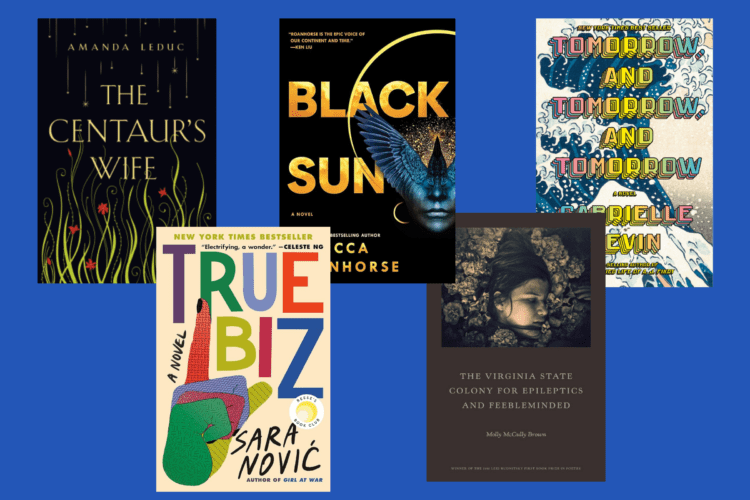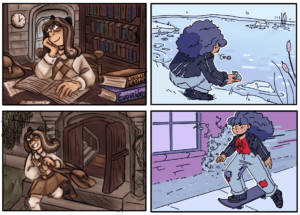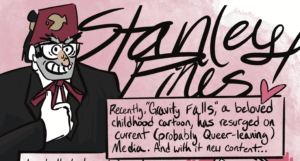
It is a struggle to find good disability representation in fiction. Too often, characters with disabilities are either killed off to further the plot of an able-bodied character or they’re unrealistic inspiration porn. But well-written characters with disabilities and narratives about disability are out there. “Crip Lit” and “DisLit” have an ever-expanding canon. We’ve curated this list of books; centering stories that approach disability with nuance and depth. These are not easy reads, and you may find yourself affected by them. This is intentional: living with disabilities can be complicated and messy.
“The Centaur’s Wife” by Amanda Leduc, selected by Sidne K. Gard
Part climate-revenge story, part fairy tale, Amanda Leduc’s “The Centaur’s Wife” is a beautifully braided narrative of disability, survival, and motherhood.
Heather, the main character, was born with cerebral palsy. As a child, she ventured up the mountain that overlooked her hometown with her father, who sought a way to heal her. Her experiences with the creatures on the mountain color the rest of her life. As an adult, Heather gives birth to twin girls the day the world ends as comets crash into the Earth. She and fellow survivors stumble through a world where greenery overtakes the remains of humanity and fables are the only thing left to hold on to.
This narrative is not for the faint-of-heart, touching on suicide, pregnancy, and deep wells of grief. But Heather’s understanding of her disabled body in relation to being a mother is a moving tale interwoven inside a dreamlike, deadly world. For those who prefer audiobooks, the narration for “The Cenaur’s Wife” is phenomenal.
“True Biz” by Sara Novic, selected by d.l.adams
Written by deaf rights activist Sara Novic, “True Biz” follows the students and teachers at the fictional Riverside Valley School for the Deaf. The book follows three main characters in the school: February, the headmistress who is a Child of Deaf Adults and speaks fluent American Sign Language; Charlie, who has never met another deaf person until enrolling at Riverside Valley, and has a malfunctioning cochlear implant and cannot speak ASL; and Austin, who comes from a proud deaf family and has been immersed in deaf culture his entire life. The three characters are at pivotal points in their lives and the book follows them throughout one school year. Interspersed throughout the novel are lessons and informative graphics so the reader can learn more about ASL and the deaf community.
“Black Sun” by Rebbeca Roanhorse, selected by Sidne K. Gard
If you’re looking for a new epic fantasy story to get lost in, look no further. Rebbeca Roanhorse’s “Black Sun,” the first book in the “Between Earth and Sky Trilogy,” is inspired by the civilizations of the Pre-Columbian Americas and delves into prophecy, magic, politics, love, and the body. Through the novel, the reader follows many different points of view of characters, all ultimately on their way to converge for the winter solstice in a holy city called Tova. These rich characters are each outsiders in one way or another.
Serapio is one such character. As a child, his mother blinds him as part of a ritual. He is raised to fulfill a prophecy. Is he a man or is he a symbol? This question ties into the way his blindness is handled within the narrative. Serapio’s blindness is grounded, even when tied to magic. His disability is constantly present, without being what defines his entire character. His gray morality, his wonder about the world, his prophecy’s future, and his budding romance with a ship captain are all just as much part of who he is.
Be warned, when you pick up “Black Sun”, it will be hard to put down until you’ve finished reading all 454 pages.
“The Virginia State Colony for Epileptics and Feebleminded” by Molly McCully Brown, selected by Sidne K. Gard
Sometimes the only way to reckon with history is through poetry. In this poetry collection, poet and essayist, Molly McCully Brown, puts a microscope on the lives of the patients (and doctors) who lived at the real Virginia State Colony for Epileptics and Feebleminded — a notorious institution tied to the American eugenics movement in the early to mid 20th century.
Brown, who herself is disabled, grew up only a short distance away from the remaining buildings of the institution. In the first poem, she writes, “It is my backyard but not what happened to my body—” Her poems give voice to the ghosts of the many people who were once institutionalized, harmed, forcefully sterilized, and died within those walls. These poems demand that the reader not look away from these histories, but assert that the past is still part of today’s generations.
“Tomorrow, and Tomorrow, and Tomorrow” by Gabrielle Zevin, selected by d.l.adams
Selected as the Chicago Public Library’s One Book, One Chicago (a shared-reading initiative) for September and November, Gabrielle Zevin’s “Tomorrow, and Tomorrow, and Tomorrow” follows two friends, Sadie and Sam, as they design a video game and build their gaming company. The story is told in alternating narratives, including flashbacks, flash forwards, and various character perspectives. Zevin captures readers, immediately making you care about the charactersx, even if they come off as a little pretentious. In fact, that’s the point: they’re Harvard and Massachusetts Institute of Technology graduates, after all.
Sam and Sadie meet in a children’s hospital ward — Sam’s there after a tragic accident that crushed his foot and Sadie is there because her sister has cancer — the two of them bond over video games. Readers follow along as Sam deals with the aftermath and further complications with his foot. Zevin doesn’t make Sam’s disability the primary aspect of his identity; instead, we get a rounded character with desires, needs, and flaws.
Living with disabilities and chronic illnesses is not one simple story — which is exactly why it is important to be sharing books that tell these complex narratives. These four novels (and one poetry collection) are just the tip of the iceberg. Literature gives an insight into one another’s experiences.







